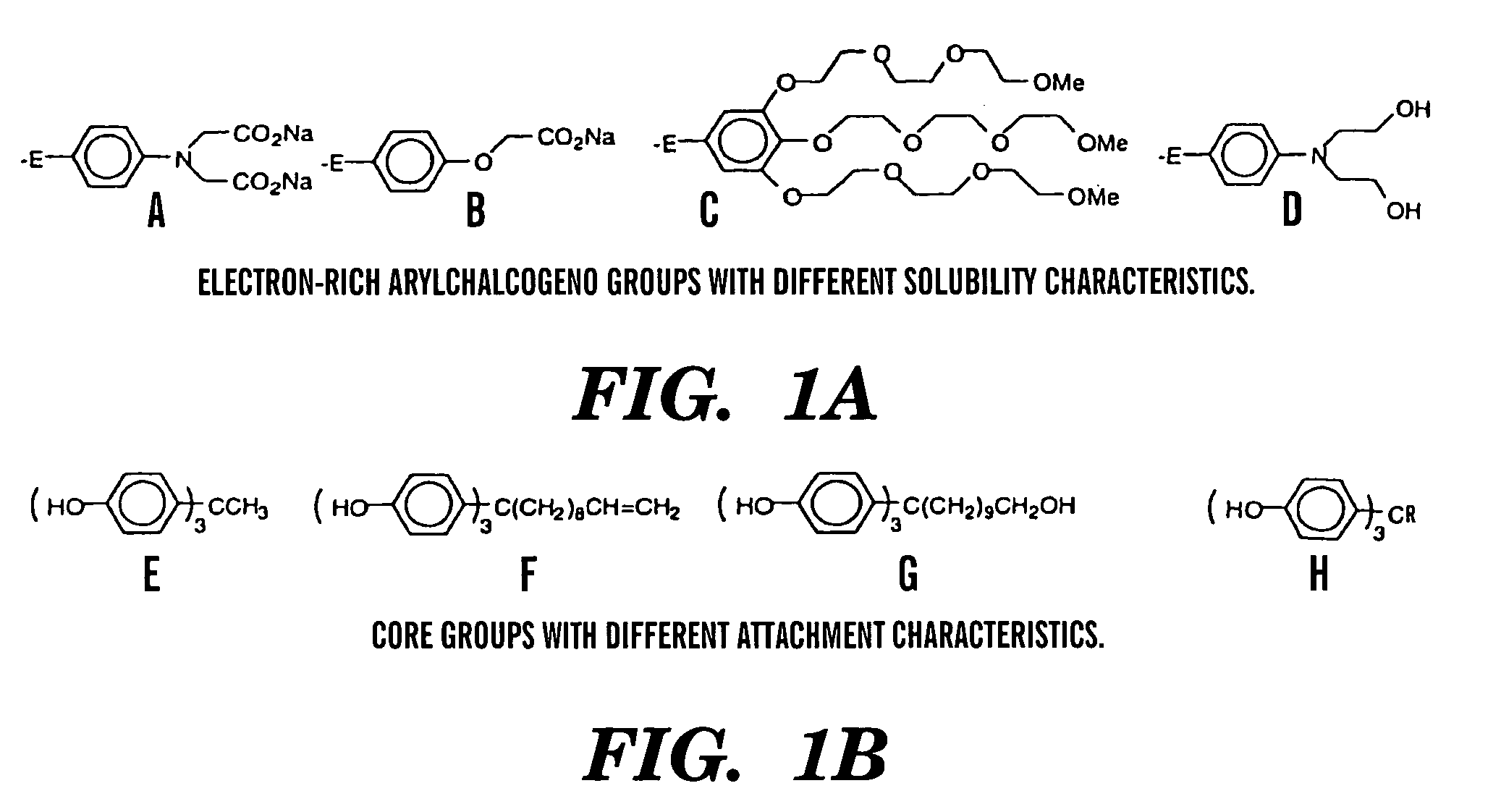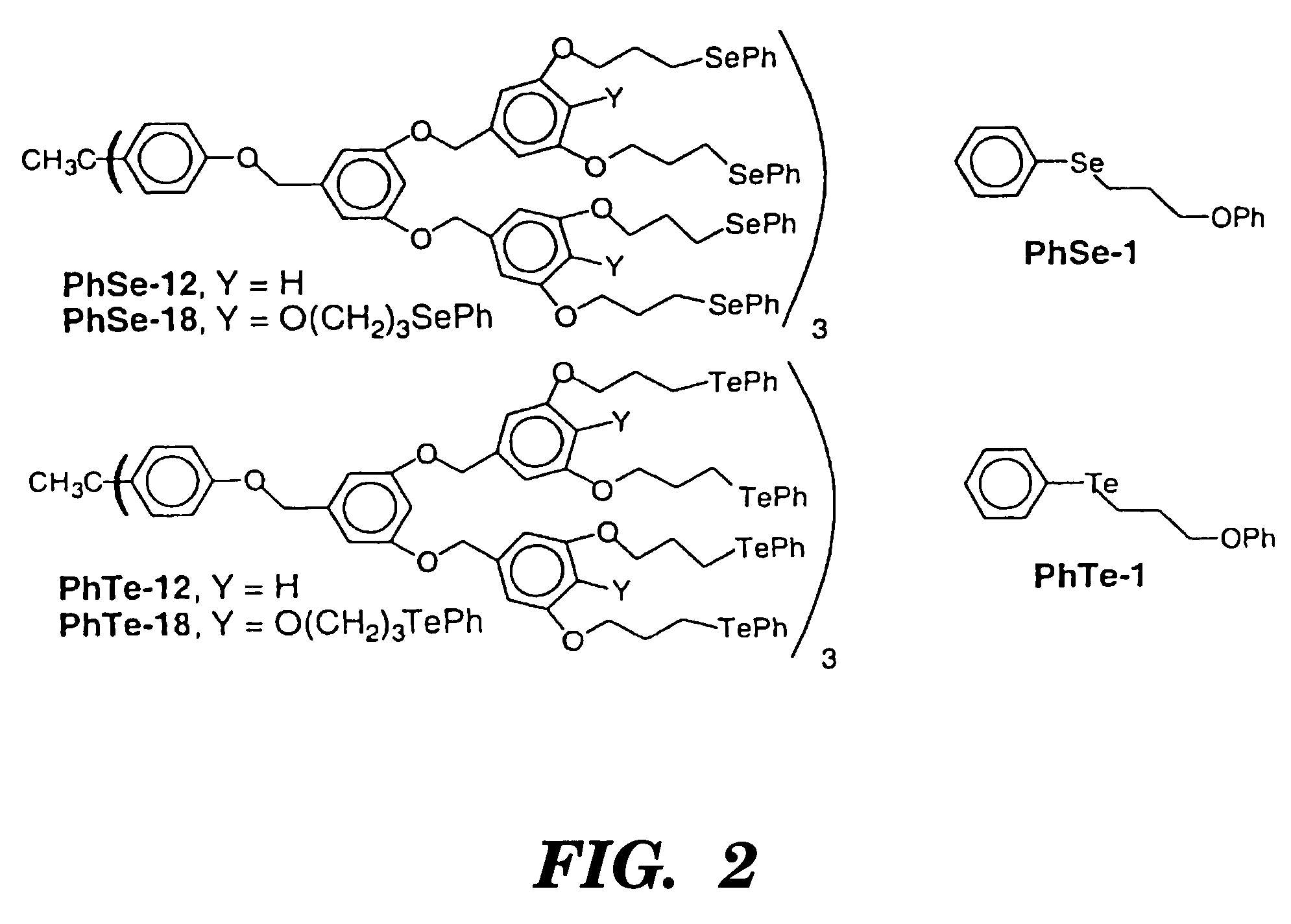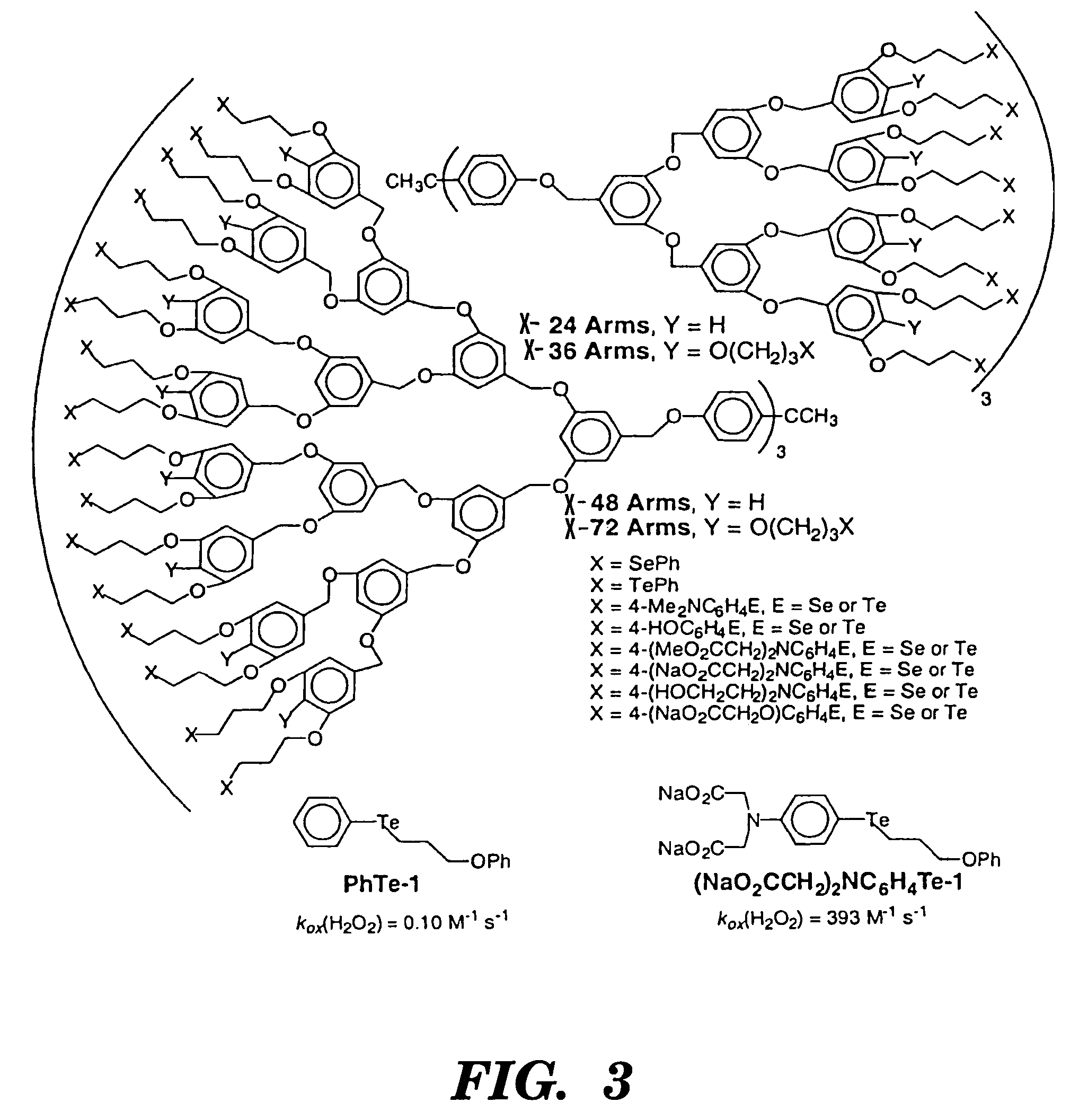Hybrid anti-fouling coating compositions and methods for preventing the fouling of surfaces subjected to a marine environment
a technology of anti-fouling coating and composition, which is applied in the direction of biocides, liquid/solution decomposition chemical coating, prosthesis, etc., can solve the problems of coating material leaching, high cost, ocean pollution, etc., and achieve the elimination or reduction of the risk of contamination to the surrounding environment, the effect of reducing the adhesion of oceanic species and reducing the risk of contamination
- Summary
- Abstract
- Description
- Claims
- Application Information
AI Technical Summary
Benefits of technology
Problems solved by technology
Method used
Image
Examples
example 1
Preparation of Dendrimeric Arylchalcogeno Derivatives
[0095]Dendrimeric polyorganotellurides are prepared in high yield using propyloxy spacers to connect the organotelluride groups to the core molecules. The polyorganotellurides catalyze the oxidation of thiophenol with hydrogen peroxide to give diphenylsulfide in homogeneous solutions (5% CH2Cl2 / MeOH or 46% CH2Cl2 / MeOH). The polyorganotellurides with 2, 3, 4, and 6 catalytic groups show roughly statistical increases for the number of catalytic groups relative to the corresponding monotellurides. Catalysts containing 4-dimethylaminophenyltelluro groups and n-hexyltelluro groups are oxidized more rapidly by hydrogen peroxide and also show greater catalytic activity than the corresponding catalysts containing phenyltelluro groups. A combination of statistical effects and stereoelectronic effects give a 26-fold increase in catalytic activity from 1-phenoxy-3-(phenyltelluro)propane (23a, v0=12 μM min−1) to dendrimer 22c with 6 n-hexylte...
example 2
Preparation of Coating Compositions
[0144]PhSe-6 (Francavilla et al., J. Am. Chem. Soc. 123:57 et al. (2001), which is hereby incorporated by reference in its entirety) (FIG. 7) was incorporated in a hybrid TEOS-based [tetraethoxysilane, Si(OEt)4] sol-gel and the water-soluble dendrimer WSSe-6 (FIG. 7) was incorporated in a hybrid TEOS and enTMOS sol-gel at loading levels of 10 to 100 ppm. At the higher loading levels, dichloromethane was used as a cosolvent to solubilize the PhSe-6 dendrimer. No film desorption and no leaching of the sequestered material were observed within the detection limits of inductively coupled plasma mass spectrometry (20 parts per trillion (ppt) for Te and 42 ppt for Se) using water, dichloromethane, ethanol, or various buffers (pH=2-9) as solvent.
[0145]Unretouched photographs of 1-2 μm-thick sol-gel films at 80-ppm loading of dendrimer are shown in FIG. 21A-F. FIG. 21A shows a blank, homogeneous sol-gel film. FIG. 21B shows a hybrid TEOS / enTMOS composite o...
example 3
Bleach Generating Coatings: Peroxide Activation with Sol-Gel-Immobilized Dendrimers
[0147]Nine samples were tested, as set forth in below:
[0148]
BlanksB2B3B4CatalystX2X3X4CatalystY2Y3Y4
The blanks are sol-gel matrices without a dedrimeric derivative of the present invention. B2 is a 45 / 55 (mol. ratio) n-propyl-trimethoxysilane (pro-TriMOS) / tetramethylorthosilane (TMOS) sol-gel, B3 is a 2 / 98 (mol. ratio) bis[3-(trimethoxysilyl)propyl]ethylenediamine (enTMOS) / TEOS sol-gel, and B4 is a 77 / 23 (mol. ratio) pro-TriMOS / TMOS sol-gel. The samples identified as catalyst are coating compositions including one of the above-described sol-gel matrices (X2 and Y2 include B2; X3 and Y3 include B3; X4 and Y4 include B4) and a dendrimeric derivative. The X series of catalysts includes the dendrimeric derivative 9a identified in Example 1. The Y series of catalysts includes the dendrimeric derivative 15a identified in Example 1. The blank samples (B) produce no hypochlorous acid. Dendrimer X and Y vary ...
PUM
| Property | Measurement | Unit |
|---|---|---|
| surface pressure | aaaaa | aaaaa |
| surface pressure | aaaaa | aaaaa |
| shear stress | aaaaa | aaaaa |
Abstract
Description
Claims
Application Information
 Login to View More
Login to View More - R&D
- Intellectual Property
- Life Sciences
- Materials
- Tech Scout
- Unparalleled Data Quality
- Higher Quality Content
- 60% Fewer Hallucinations
Browse by: Latest US Patents, China's latest patents, Technical Efficacy Thesaurus, Application Domain, Technology Topic, Popular Technical Reports.
© 2025 PatSnap. All rights reserved.Legal|Privacy policy|Modern Slavery Act Transparency Statement|Sitemap|About US| Contact US: help@patsnap.com



